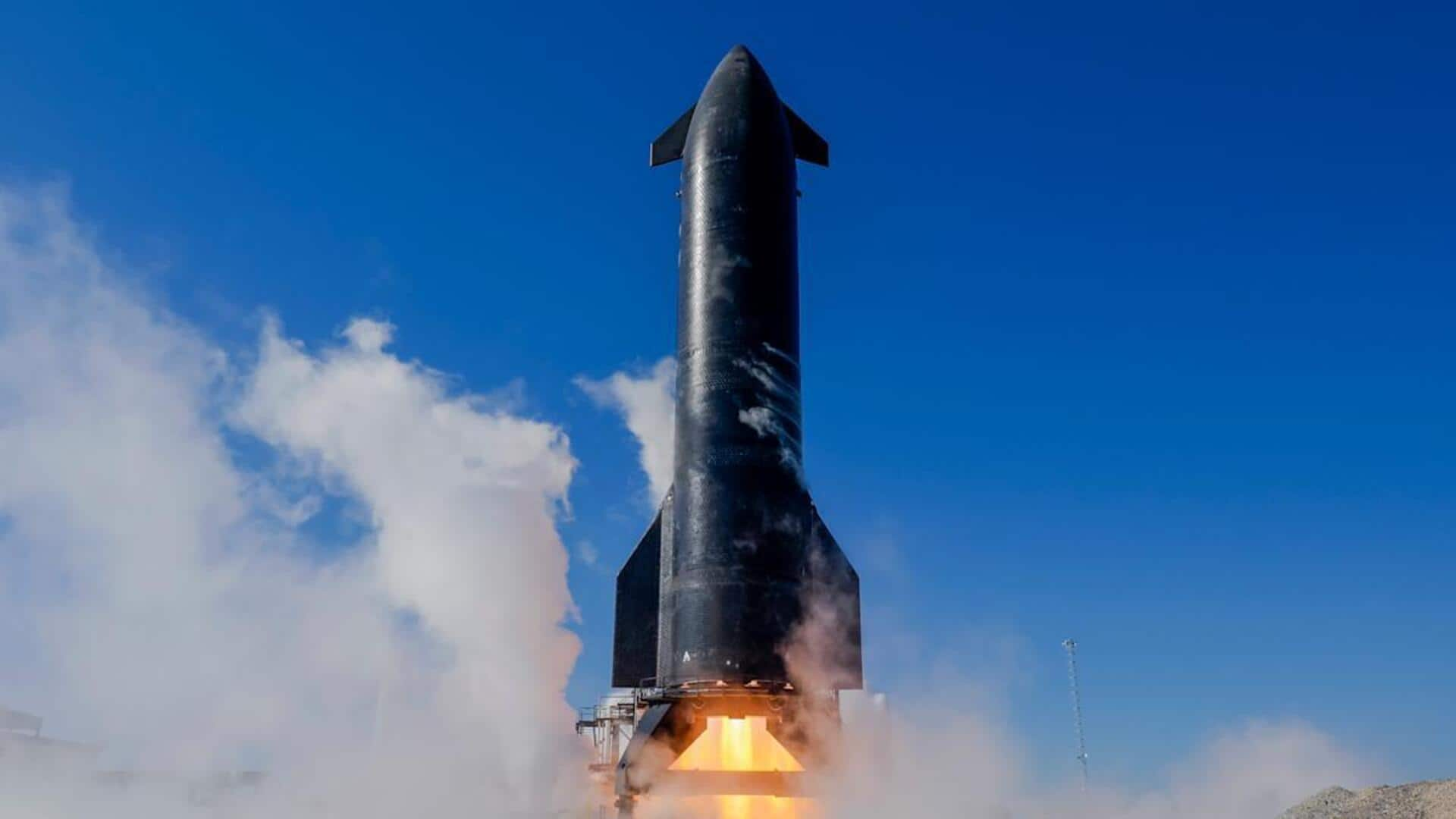
50-50 chance Starship reaches Mars by late 2026: Musk
What's the story
Even after three consecutive test failures, Elon Musk has reiterated SpaceX's plan to launch its first uncrewed Starship mission to Mars by the end of 2026. The billionaire tech mogul shared this ambitious timeline in a recent video. However, he tempered expectations by saying there's only a "50-50 chance" of meeting this deadline.
Mission details
Mission aligns with rare planetary alignment
The proposed 2026 Mars mission would coincide with a rare orbital alignment of Earth and Mars, which happens every two years. This would make the interplanetary journey shorter, taking between seven to nine months. If delayed, the next opportunity would be in 2028. "If it's not ready in time," Musk said, "we'll have to wait for the next window two years later."
Mission specifics
First Mars mission to feature Tesla-designed robots
The first uncrewed Starship mission to Mars won't have humans on board. Instead, it will carry a simulated crew of robots designed in the Optimus (humanoid robot) format by Tesla. Human missions could follow in the second or third landings, Musk said. Eventually, SpaceX plans to launch 1,000 to 2,000 ships to Mars every two years with the aim of establishing a permanent, self-sustaining human colony there.
Twitter Post
Musk on SpaceX's plan to reach Mars
The Road to Making Life Multiplanetary: an update from @elonmusk on SpaceX's plan to reach Mars pic.twitter.com/d2cnsVKK80
— SpaceX (@SpaceX) May 29, 2025
Test flight
Starship's test flight ends in failure
The announcement of the Mars mission timeline comes just days after another failed test flight. SpaceX attempted the ninth test flight of the Starship-Super Heavy rocket system from its Starbase site in Texas. The mission ended in failure when the craft lost control and exploded about 30 minutes after launch. This was the third consecutive failed test for Musk's ambitious space program.
Optimism
Musk remains optimistic despite setbacks
Musk remains optimistic about the future of Starship amid the string of failures. He took to X and wrote that "Starship made it to the scheduled ship engine cutoff, so big improvement over last flight! Also no significant loss of heat shield tiles during ascent." However, he did acknowledge that "leaks caused loss of main tank pressure during the coast and re-entry phase."
Investigation
FAA investigates Starship's failed test flight
The Federal Aviation Administration (FAA) confirmed there were no injuries or damage to property from the failed test flight. "There were no reports of public injury or damage to public property at this time," it said in a statement. The agency is now investigating the incident with SpaceX. Meanwhile, Musk has promised to speed up testing with Starship launching every three to four weeks, a major jump from earlier timelines.
Collaboration
NASA partners with SpaceX for Artemis program
NASA has partnered with SpaceX to use Starship for its Artemis program, aiming to return astronauts to the Moon as early as 2027. This would be the first such mission since the Apollo era over 50 years ago. If successful, it will pave the way for future human missions to Mars in the 2030s. Despite setbacks, Musk remains focused on making life multiplanetary through his companies SpaceX and Tesla.